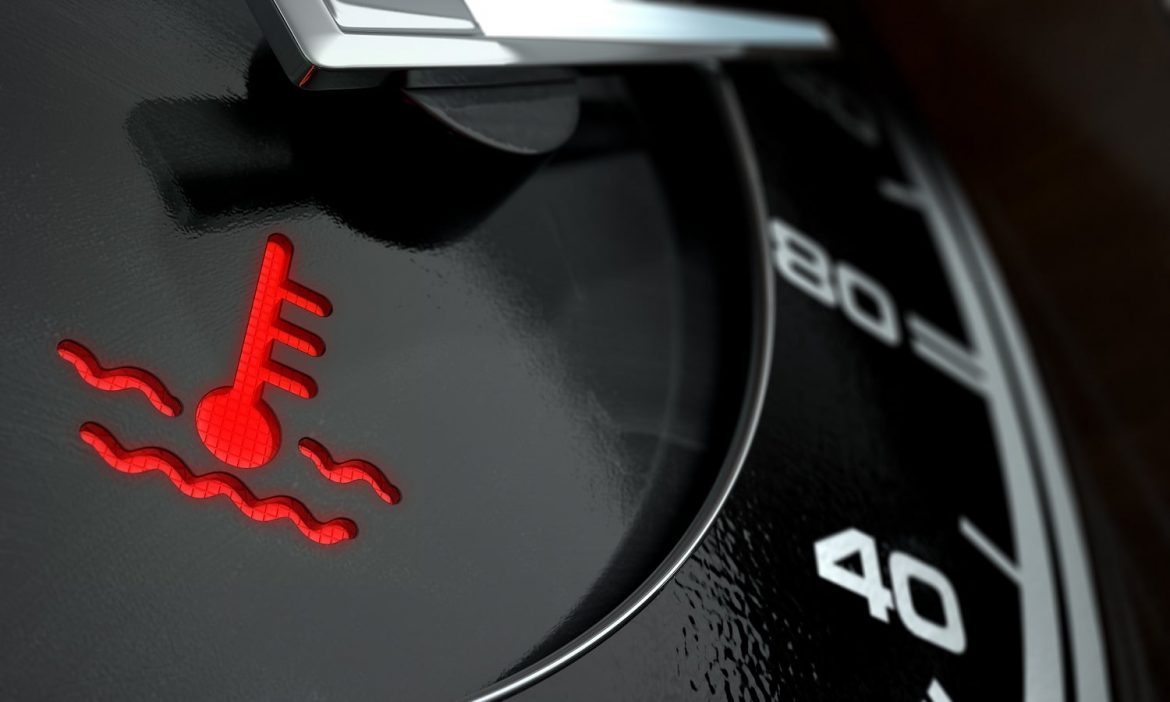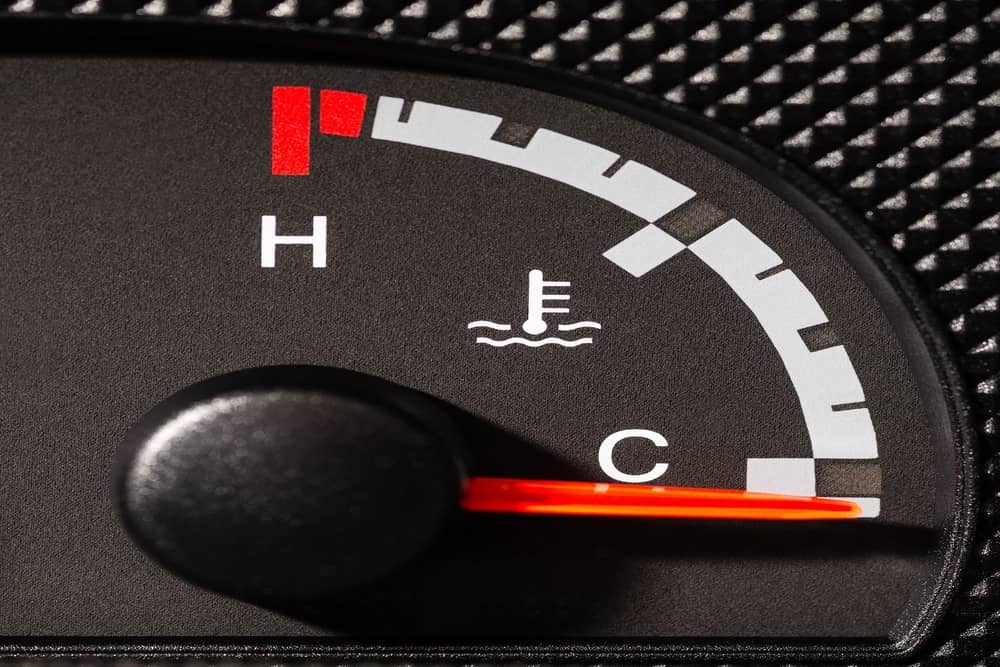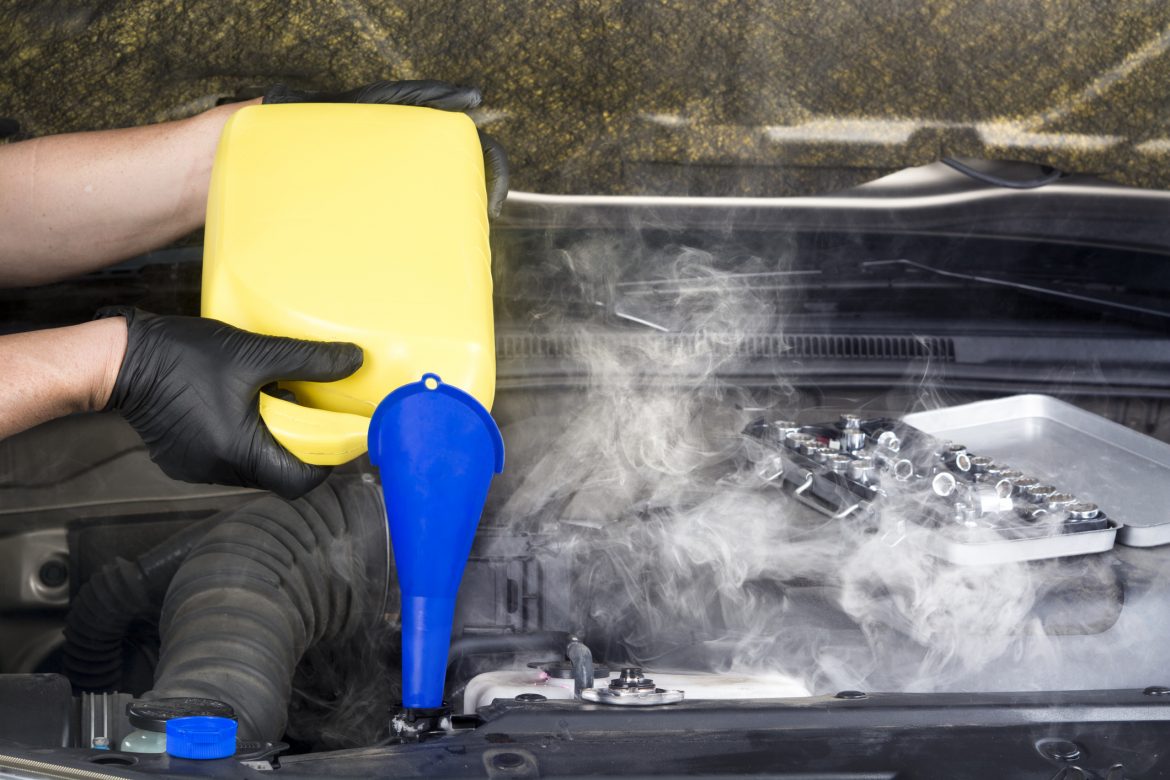It’s a Hollywood staple: the happy-go-lucky vacation sidetracked by the image of mom and the kids standing forlorn at the side of the road while dad waves a shirt at an overheated car engine, hood up and white smoke pouring out. Vacation ruined, danger lurking, cue the foreboding music.
An overheated engine is actually the final symptom of a string of problems—a leaking radiator or hose, a bad thermostat, a blown head gasket—and often also lack of vigilance on the part of the operator. There are usually plenty of red flags long before a car begins overheating, most notably dashboard warning lights.
Let’s take a look at the causes of an overheating engine and possible preventative steps you can take, then consider short-term and long-term solutions. One thing you should never do is drive around with an engine that has overheated because you will just further damage it. It doesn’t take long for pistons, cranks, cams, rings and rod bearings to warp, the radiator to sustain damage beyond repair, seals and gaskets to deform, the cylinder head to melt and the engine block to crack. (Other than that, it’s no problem.)
What can cause an engine to overheat?
There are a number of issues that can cause an engine to overheat, but most of them boil down to loss of coolant or motor oil. The most common cause of overheating is insufficient coolant in the radiator. This could be caused by not adding coolant when needed, not adding the correct 50/50 blend of antifreeze and water, or a leak in the radiator, radiator cap, radiator hoses or hose clamps. It’s often easy to trace the leak by checking the cap and running your hand along the hoses and clamps. Before enough coolant can drip out to cause overheating, you should see puddles beneath the car when parked. Those are telltale signs of a leak that needs to be addressed.
Bad thermostat – The thermostat determines when coolant should flow to and from the radiator into the engine. When it malfunctions, coolant stops flowing and the engine can overheat.
Broken radiator fan – the radiator fan cools the fluid that flows away from the engine before it can continue to circulate and repeat the job of cooling. It the heated fluid remains hot because the fan isn’t turning, it will not cool the engine.
Broken water pump – If the part responsible for circulating the coolant fails, the coolant can’t get to the engine and do its job.
Low oil levels – Yes, low oil levels can cause overheating. Motor oil lubricates parts, reducing friction and keeping them cool in the process. Check the oil level and if it’s low, fill it up. If it’s dirty, change it. Motor oil that loses its lubricating ability leads to the same problems. Oil leaks announce themselves in the form of blue or bluish-gray smoke from the exhaust or greasy puddles below the car.
Blown head gasket – if you’ve blown your head gasket, you have bigger problems than just an burning motor. A blown head gasket is the granddaddy of car issues, allowing coolant to leak into the combustion chamber, motor oil to contaminate the cooling system, and a thousand-plus dollars to fly out of your wallet. Fortunately, a blown head gasket is much less often the cause of an overheating engine than these other issues.
Drivers of RVs with 6.7 Cummins diesel engines know they are prone to overheating. Often this is a result of overloading the vehicle – either with too much stuff in the RV, too many appliances running simultaneously or too big a load being pulled. If the engine begins to overheat, reduce the load.
Of course, these engines can overheat for all the reasons named above, so if you’re below the vehicle’s weight limit and not running an unusual number of appliances, consider the other potential causes. Check for a coolant or oil leak, make sure the radiator fan is turning, etc.
If none of these seem to be the issue in your car, or you just have questions about what to do, reach out to BlueDevil’s Ask a Pro for help diagnosing the problem.
How can I prevent my engine from overheating?
The two most important actions you can take to prevent your engine from overheating are:
- Have your car serviced regularly according to the owner’s manual. This includes regular oil changes and periodic servicing. Your car care professional should regularly check the hoses, clamps, fluid levels, and other parts of the vehicle to ensure it is running optimally.
- Pay attention to the warning signals, particularly dashboard lights, puddles beneath the car when parked, and engine distress when driving. No one knows your car’s normal rhythms better than the person who operates it most. Is it hissing, rattling or knocking? Is it running hotter than normal, even if the needle isn’t in the red? Has your exhaust smoke changed color? These are all early warning signs and suggest a visit to the service station may be in order.
What can I do if my engine is overheating?
It’s said that the first thing to do when you find yourself in a hole is to stop digging. Likewise, the first thing to do when your car overheats is to stop driving. Keep the engine running, turn on the heater, and if possible, exit the car. This will draw heat away from the engine and into the passenger compartment, which you have abandoned.
Wait about 15 minutes before opening the hood or you could get scorched by steam coming off the engine. If you’re in a position to do so, don gloves and a towel, carefully remove the radiator cap, and add coolant until the radiator is full. Restart the engine and if the temperature gauge returns to normal, resume driving, keeping an eye on the temperature and oil light. If the needle begins rising again or the light comes on, pull over and call for a tow to a service station.
Even if the needle remains in safe territory, your worries are not over. Adding coolant solves the symptom, but not the problem. Park the car overnight and look underneath it for leaks the next day. If you don’t see any, drive the car to a service station.
If you identify a sweet-smelling orange or green leak beneath the car, you are losing coolant. (Coolant comes in a wide range of vivid colors, including red, pink and blue as well.) A coolant leak can be solved permanently by pouring into the radiator a bottle of BlueDevil Coolant Stop Leak. Follow the directions on the bottle to seal leaks throughout the vehicle’s cooling system for good.
Will black pepper stop a radiator leak?
Can pouring black pepper into the radiator stop a leak? Shockingly, this old legend is actually true, in a pinch. With coolant at the full line, add a tablespoon or two of black pepper to the radiator and drive around for 30 minutes. It will staunch the leak, but black pepper in the radiator does not do the job for long. Use this method to get to the store for some Coolant Stop Leak.
If you notice a greasy brown/black puddle with a rainbow sheen, that’s an oil leak. Oil leaks are also identifiable by popping the hood and noticing oil all over the engine. Try adding a bottle of BlueDevil Oil Stop Leak, which permanently repairs seals and gaskets in the engine and prevents oil leaks. Follow the instructions on the bottle for an inexpensive fix to a potentially expensive problem.
If any of these do-it-yourself solutions don’t permanently end your overheating problem, bring your car in to your car care professional for a more thorough diagnosis and comprehensive repair. Overheating engines are dangerous to drivers, passengers, and the car itself.
BlueDevil Products can be found on Amazon.com or at AutoZone, Advance Auto Parts, O’Reilly Auto Parts, NAPA, and other major auto parts retailers.
Related Articles
Search Blog
Subscribe
Blog Categories



